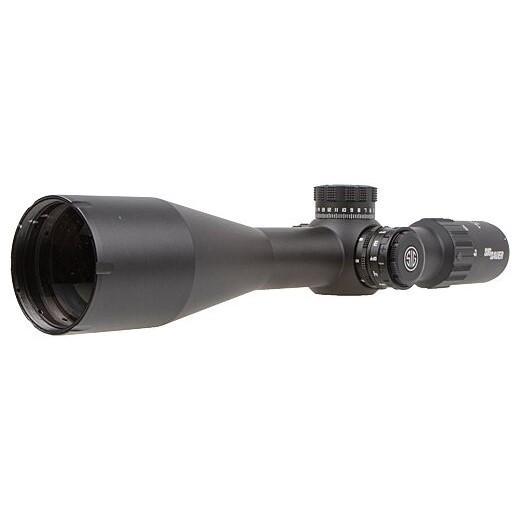

Sig Sauer TANGO-DMR Rifle Scope 5-30x56 offers precise performance for serious long-range shooters. With its first focal plane (FFP) design, the reticle maintains accurate scaling across the entire magnification range, allowing for reliable adjustments regardless of distance. This scope features a zero stop elevation dial and low-profile windage adjustments for quick and easy targeting, ensuring minimal distraction while focusing on your shot. Its lightweight build enhances comfort during extended use, making it an ideal choice for long days in the field.
Equipped with a sunshade and removable throw lever, this scope adapts to various shooting conditions with ease. Exceptional optical clarity is achieved through advanced lens coatings, contributing to effective glare reduction and improved visibility. The durable construction ensures it withstands the rigors of outdoor use, making it a dependable tool for tactical training and hunting alike.
Features:
- PREMIUM OPTICS for unmatched clarity and brightness, ensuring every detail is sharp.
- FIRST FOCAL PLANE RETICLE maintains accurate subtensions at all magnifications for precision shooting.
- ZERO STOP ELEVATION DIAL allows quick, easy adjustments for fast on-the-fly changes.
- LOW-PROFILE CAPPED WINDAGE protects adjustments from accidental shifts, keeping your shot consistent.
- LIGHTWEIGHT DESIGN minimizes strain during long hours in the field, enhancing comfort.
- REMOVABLE THROW LEVER enables rapid magnification changes for quick target acquisition.
- SUNSHADE INCLUDED reduces glare and improves visibility in bright conditions.
- DURABLE CONSTRUCTION withstands tough environments, ensuring longevity and reliability.
Technical Specifications Table
| Feature | Specification |
|---|---|
| Magnification | 5-30x |
| Lens Diameter | 56mm |
| Tube Diameter | 34mm |
| Weight | 30 oz (approx.) |
| Dimensions | 14.5" length |
| Illumination | 2.0 Illum |
| Reticle | DEV-L MRAD |
What’s in the Box?
- Sig Sauer TANGO-DMR Rifle Scope
- Sunshade
- Removable throw lever
- User manual
- Lens covers
Customer Reviews
"The clarity is outstanding, making it easy to spot targets at great distances!"
"I love the zero stop feature; it makes adjustments so straightforward and reliable!"
"Lightweight and tough—perfect for long days in the field!"
FAQ
How does the FFP reticle benefit me?
The first focal plane design allows for accurate range estimation at any magnification. As you zoom in or out, the reticle scales accordingly, ensuring you can make precise adjustments for distance.
Is the TANGO-DMR suitable for low-light conditions?
Absolutely! The 56mm objective lens gathers maximum light, providing exceptional clarity even in challenging lighting situations, making it ideal for dawn or dusk shooting.
What maintenance is required for this scope?
Regularly clean the lenses with a soft cloth and store the scope in a protective case to prevent dust and scratches. Check the adjustments periodically to ensure they hold zero.
How does this compare to other long-range optics?
While many scopes offer similar magnification, the TANGO-DMR sets itself apart with its lightweight construction, robust features, and superior optical performance, making it a top choice for serious shooters.
Similar Models
Looking for more exceptional optics? Explore our full Sig Sauer lineup, including the Sig Sauer TANGO6 and TANGO-MSR scopes, tailored for varied shooting needs. Whether you’re in the market for more compact options or different reticle styles, we have everything you need for your adventures.
You May Also Like
Here’s some of our most similar products people are buying. Click to discover trending style.






